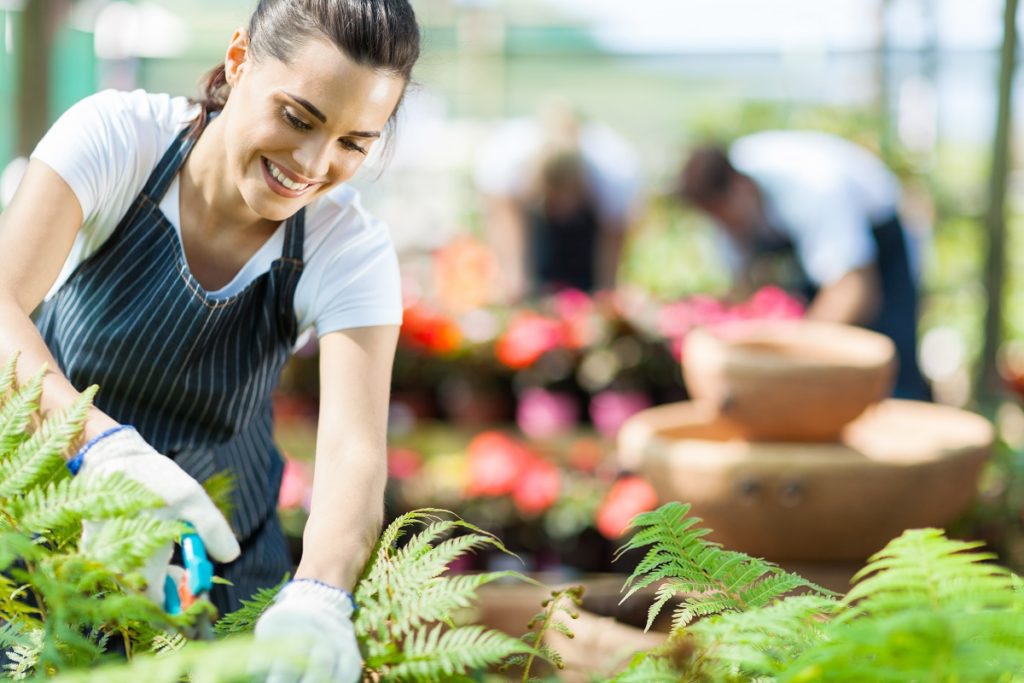Gardening is an important home activity for many of us, especially during the pandemic. But not all gardening practices are sustainable. That might be a little hard to believe, given that gardening in itself is an eco-friendly practice for your home. Plants help clean the air and provide natural cooling for the surroundings.
But some of the materials and methods we use for our garden aren’t good for the environment. Sometimes we can also make the mistake of building a garden that will take too much effort and resources to maintain. Good gardening practices should be all about using the right methods and materials and having a garden that won’t be too difficult for you to maintain. Here are five ways to build a sustainable, low-maintenance garden:
Grow your own or buy local.
Buying produce from the supermarket is convenient, but oftentimes there’s a big carbon footprint attached to the items we buy. The items that we get might have traveled from many miles away. This also means that they might not be as fresh as locally produced food. You can get locally produced foods at Farmers’ markets, local grocers, or check the label at the supermarket.
You can also grow food at home. Vegetable gardening – and gardening in general – is a great activity to do with your family. It’s done outdoors and is a form of exercise, so it’ll get everyone moving and getting their needed doses of vitamin D. If you have kids, vegetable gardening is a good activity you can get them to help out with. It engages all their senses, enables them to take risks, and helps them develop a sense of care for the environment and other living creatures. It’s also proven that children who engage in gardening activities incorporate more fruits and vegetables into their diet.
Garden organically.
Some gardening practices are just better than others, and this is one of them. Organic gardening involves the use of natural substances and materials for your garden instead of chemicals. The use of organic alternatives for pesticides and fertilizers ensures better homegrown food for you and your family. The chemicals found in common pesticides and fertilizers can contaminate not just your crops but your water supply too.
One organic gardening practice that’s easy to make a habit of is mulching. This refers to applying a layer of materials to the soil to minimize soil erosion and retain moisture. One of the materials you can use as mulch is sod or compost. Compost is made of kitchen and yard waste, so it’s a good way to lessen the amount of waste sent to landfills. Just make sure that the twigs and leaves you add to your compost pile aren’t from disease-ridden plants. This may cause the diseases to spread to the other plants in your garden.
Related: The Ultimate Mulch Guide: How to Find the Best Type for Your Garden

Use safer alternatives for pest control.
Sometimes insects can sneak their way into your garden and enjoy the fruits of your labor before you’ve even reaped them. But while pesticides with harsh chemicals might succeed in keeping the critters at bay, they can also harm you and your family. There are several homemade concoctions you can whip up that are just as effective.
Be picky about plants.
One of the top tips to gardening is to choose the right plants to have in your collection. Exotic plants are fun, but there’s no point in having them if they don’t thrive in your climate. Grow plants that are indigenous to your region so that they’ll grow easily. Your local bees and butterflies will also be more accustomed to them, so they’ll drop by your garden and pollinate your plants.
Research plants that can thrive in your area with minimal maintenance. This will help you save on resources such as water and fertilizers and your time and energy.
Pave your yard or lawn.
As much as we love the sight of lush green lawns and yards, it takes much work and often a lot of money to keep them looking that way. This isn’t to say that you should eliminate all the grass in your yard. Rather, you should consider lessening the amount of square footage that’s covered by grass. You can do this by constructing walkways around your lawn or garden made of gravel or stone. If you’re having trouble altering the layout of your yard, consult a landscaper.
Related: How to Choose the Best Gravel for Your Garden
A garden that takes too much time and resources to maintain is not sustainable gardening. It’s about creating and maintaining a garden that doesn’t harm the environment, your produce, or you and your family. A sustainable garden should also survive in your region and with the materials you provide it. Be careful not to bite off more than you can chew when it comes to gardening. Just take good care of your plants and watch the fruits of your labor grow.

